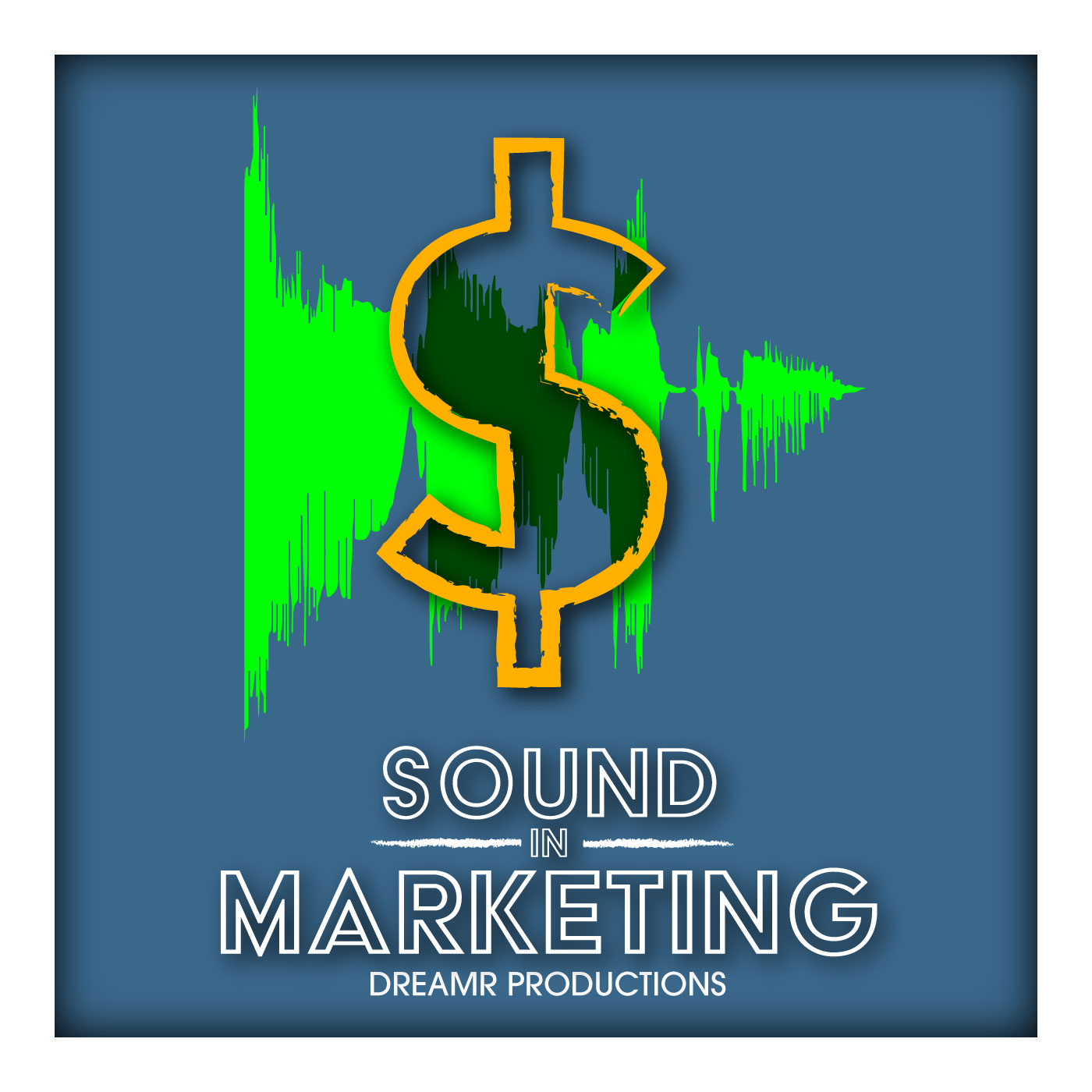
NBC, McDonald’s, Netflix, and State Farm all have a sound. Did you just sing it? Host Jeanna Isham of Dreamr Productions and Sound In Marketing Learning explores how far brands are willing to go to make their companies and products memorable and profitable through sound strategy. Let’s talk about it. Subscribe to the Sound In Marketing monthly newsletter today. http://eepurl.com/gDxl6b Let’s make this world of sound more intriguing, more unique, and more and more on brand.
Episodes

Wednesday Aug 14, 2019
Episode 8- Spotify, Pandora, and Other Advertising Options
Wednesday Aug 14, 2019
Wednesday Aug 14, 2019
Today’s episode is about advertising in the sound universe. Although there are a bunch of platforms that advertise through sound and music, I decided to do a focus on the two that were most noteworthy to me in present day; Pandora and Spotify.
Pandora not only has a super interesting podcast on sound marketing but they also launched their Pandora For Brands department. This is where they actually are working with brands to develop ads to target your exactly specific audience. Pandora will develop an ad with you that will speak to your correct audience and ideally increase your click rate by using their 10 years of data and analytics on their consumers to your advantage. And if that weren’t enough, Pandora even has 10+ third party data providers that can hone in even further with data like shopping behaviors, media consumption, purchase habits, what media they go crazy for, etc.
I’m not sure what the cost is for Pandora. They don’t list it I assume because they want to curate your experience. They mention and are aware of the small business so it may be based on annual revenue or marketing budget.
With Spotify, they have an Ad Studio where it looks very similar to creating a FaceBook or a LinkedIn ad. You target your audience, write your script, choose your background song, and send it over to them to record V/O and begin the campaign. They have their own V/O team which I could see as a good thing (30 seconds goes by fast...sometimes faster than an average person naturally talks). Studies have shown that 61% of audience responds better to an announcer read ad as opposed to a host read ad. So it makes sense to keep this outsourced.
Their minimum ad spend is $250 and you don’t get charged over your campaign budget spend. However, I’m not sure if there would be foreign fees or not because I believe Spotify is a Swedish company.
The main objective I believe for both parties is that they don’t want to kill the listening vibe. They want to create relevant ad experiences. And they now have the data and know-how on how to do that.
Moving back to sound advertising, I found a company called AdSonica. I reached out to the founder and he provided me with some great information.
AdSonica creates static ads with sound that you can attach to your marketing arsenal. They combine both the audio and the image into one jpeg file so that the two can stay cohesive as well as keep the quality of both functions clear without deterioration. You’re also able to include things like coupons and multiple soundtracks within the whole thing. There limitations are that they ad size maxes out at 150k so with combined image and sound, you have about 12 seconds of real estate.
Yet another reason why a sonic logo comes in handy. With limited time comes limitations. Create a recognizable sound and you can cut right to your point that much more effectively.
They’re cost is a small percentage of your ad spend. That’s it. For more information on AdSonica and to see if it’s right for you, I’ve included a link in the show notes. Just tell them Jeanna Isham says hi.
Veritonic is an unbiased 3rd party company that gathers data from all sorts of companies to see how their sounds and sound marketing fairs with the global consumer market. They just released a new case study on the effectiveness of Earcons, another word for Functional Sound, in the market today. I’ll attach the link to the eBook if you’re interested in downloading, in the show notes. So so much amazingly awesome geeky information in there so I’ll just rein it back to stay on point.
Premium vs. generic earcons is basically what the case study was about so they started it off with the premise that functional sound IS effective regardless. There were a whole bunch of numbers that I won’t get into but to sum it up 60% of listeners preferred a premium sound to a generic sound. The study also found that, “Premium sounds that are designed as part of a unified experience are more effective than sounds designed in isolation.”
What all of this means, is that premium sounds (sounds customized to a specific brand), and unified experience sounds (such as keeping on/off or connected/disconnected sounds reciprocal) have the highest recall rates.
Don’t forget to subscribe, follow, add to your library, and share with a friend. Have you read an interesting article lately, do you have any questions, do you have a really off ball event that you heard about that you want to send my way? Please share! You can find me at www.dreamrproductions.com, Linkedin, FaceBook or you can email me at jeanna@dreamrproductions.com. I want this podcast to be a collaborative event. I want it to be of benefit to us all so stop by and say hello.
Let’s make this world of Sound more intriguing, more unique, and more and more on brand.
https://www.adsonica.com/ company disbanded
https://www.adsonica.com/blog.html company disbanded
How to tune in
This podcast is available on iTunes, Spotify, Google Play, Stitcher and Podbean. Coming soon to iHeart Radio.

No comments yet. Be the first to say something!